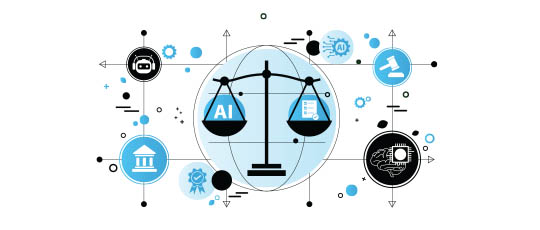- Making strides. The latest edition of the Disability Equality Index finds an increase in the number of companies employing people with disabilities in leadership roles, and that organizations are making their corporate boards more inclusive of individuals with disabilities.
- Being included in the conversation. Any discussions or efforts focused on making the organization more inclusive of people with disabilities should include people with disabilities themselves.
- Part of performance reviews. Managers and leaders should gauge disabled employees’ interest in leadership opportunities as part of performance reviews, and include individuals with disabilities in leadership development-related activities
- It starts with recruiting. When recruiting for managers and leadership positions, be sure to have people with disabilities in the recruitment pool and as part of the interview team.
A new analysis finds that more
companies are employing people with disabilities in leadership roles than in
years past, and that organizations are also trying to make their corporate
boards more inclusive of people with disabilities.
The Disability Equality Index (DEI) is
a benchmarking tool designed to help companies build a roadmap of measurable,
tangible actions to achieve disability, inclusion and equality. More than 400
organizations — including 69 of the companies in the Fortune 100 — participated in the 2022 Disability
Equality Index, which is a joint initiative of the American Association
of People with Disabilities (AAPD) and global business disability inclusion network
Disability: IN.
The 2022 report found 126 companies
with a senior executive — the CEO or within the first two layers reporting to
the CEO — who is internally known as being a person with a disability. That
number stood at 99 in the 2021 DEI. In addition, 10% of companies now have
documents that govern nominations of board directors that specifically mention
the consideration of people with disabilities, and 6% have someone who openly
identifies as having a disability serving on their company’s corporate board.
In a statement announcing the
findings, Ted Kennedy, Jr., co-chair of the Disability Equality Index and AAPD
board member, described disability inclusion as “the new frontier of ESG
[environmental, social and governance] investing and corporate social
responsibility.” Kennedy, Jr., also stressed the importance of engaging
stakeholders with disabilities and weaving disability inclusion “into
everything they do” as a way to prepare for the future and create sustainable
businesses.
This effort starts with taking a
thorough look at the entire talent lifecycle within your organization, said
Rachael McCann, senior director of integrated and global solutions, and global
DEI solutions leader at Willis Towers Watson.
“This requires looking at data — the
inclusivity of benefits and gaps, health and savings outcomes, promotion rotes,
performance ratings, fair pay and [any potential] inequities,” said McCann.
“This is a best practice for any underrepresented portion of the workforce
(subject to data limitations).”
The data gleaned “will tell a story”
and will help lead to simple but meaningful changes that aid the overall
inclusion of employees with disabilities — for instance, benefits changes,
revisiting language, images and accessibility of communications and recruitment
tools, the role of the manager, and training and education needs.
And any discussion regarding how the organization can be more inclusive of people with disabilities — and how employees with disabilities can advance into leadership positions —should include people with disabilities themselves, said David Hoff, program director at UMass Boston’s Institute for Community Inclusion.
“It is also
important to recognize that, like any group, people with disabilities are not a
monolith,” Hoff told Workspan Daily. “They vary greatly in types of disability,
the impact of disability on their lives and their support needs.”
In terms of
expanding leadership development opportunities for employees with disabilities,
Hoff urges organizations to examine their current leadership development
initiatives, and to ensure that people with disabilities are part of these
efforts.
This includes avoiding stereotypes and
presumptions about the leadership capabilities of people with disabilities,
discussing employees’ interest in leadership opportunities as part of
performance reviews, and including individuals with disabilities in leadership
development-related activities, he said.
“When recruiting for managers and
leaders, be sure to have people with disabilities in the recruitment pool and
as part of the interview team,” Hoff added. “And don’t have employees with
disabilities only serving as leaders on disability issues.”
Editor’s Note: Additional Content
For more information and resources related to this article see the pages below, which offer quick access to all WorldatWork content on these topics:
· Equitable and Diverse Workplaces







